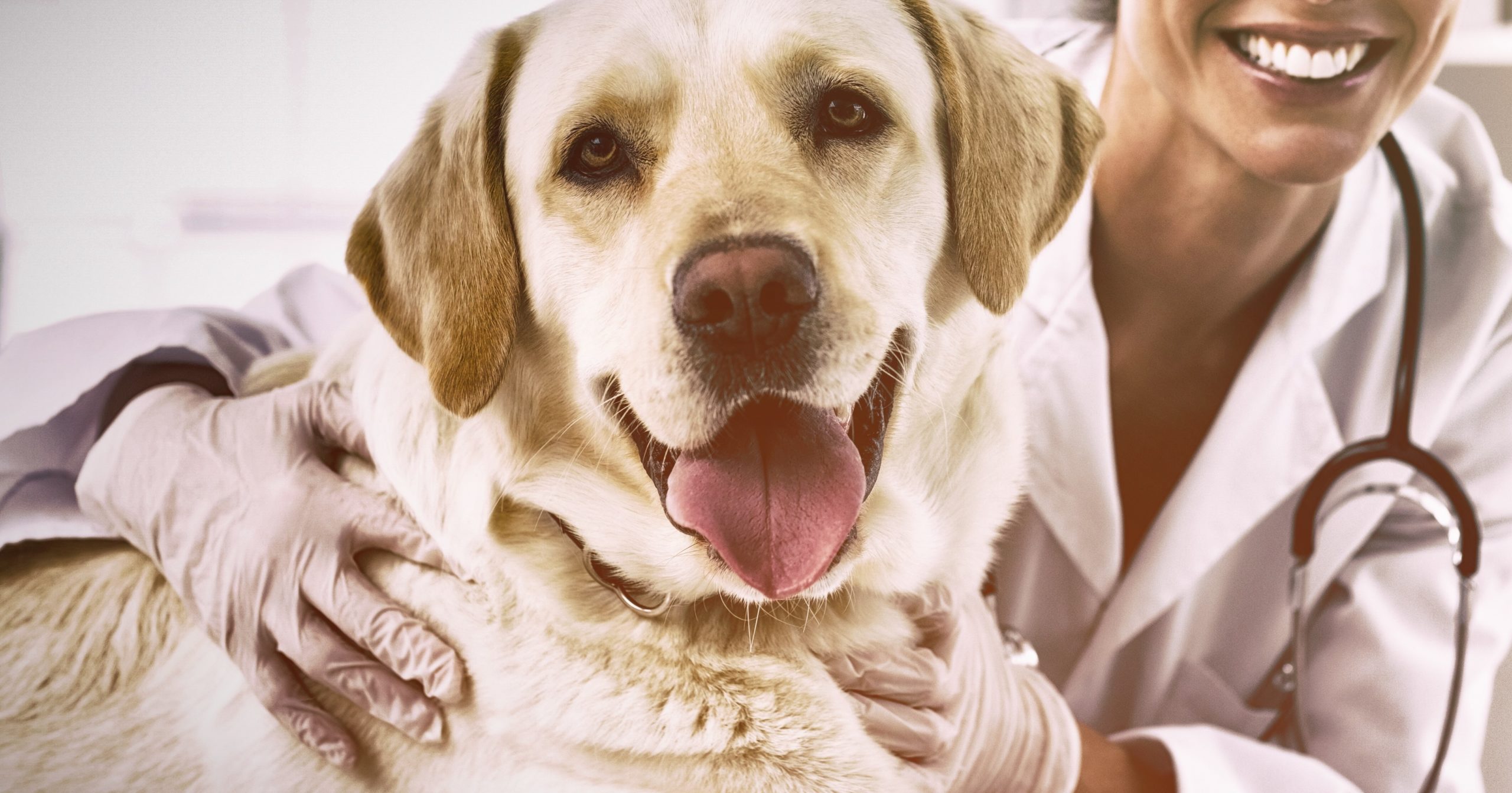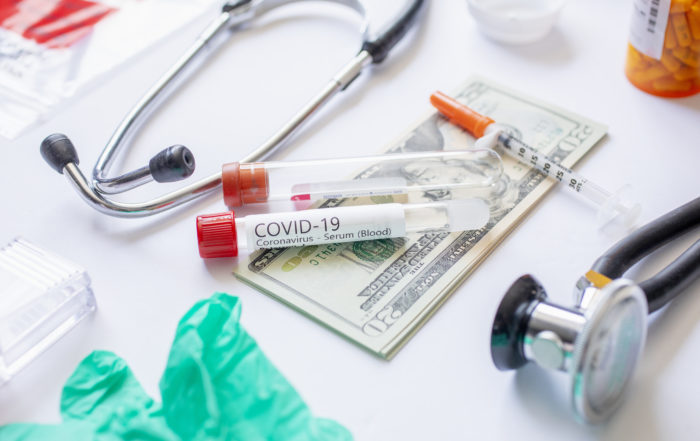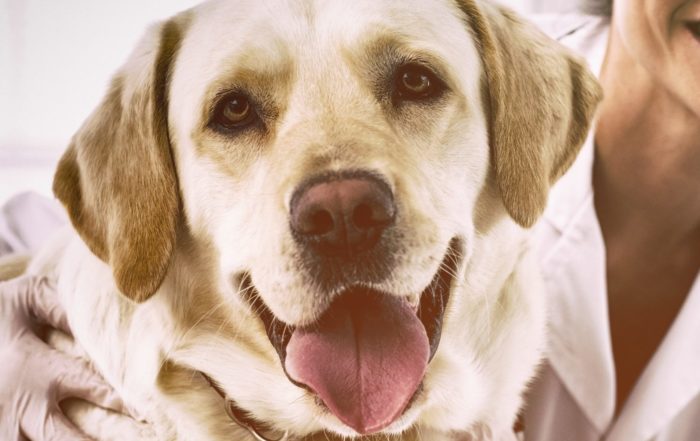
How Will FDA Regulate Disease-Sniffing Dogs?
By Makenzi Galvan and Matthew Avery [1]
Introduction
Fears of global pandemics due to outbreaks of highly-virulent diseases like the novel Coronavirus disease of 2019 (COVID-19) have boosted interest in rapid and non-invasive diagnostics, where detection is difficult and transmission between infected patients and healthcare workers is high.[2] One solution is to use animal-based diagnostics, which have the potential to be more accurate and efficient than conventional diagnostics. For example, a two-year-old beagle named Cliff was trained to identify C. difficile infections in patients’ stool samples with 97% accuracy—higher than the 92.7% reported accuracy for real-time PCR diagnostic methods.[3] Not only that, Cliff was fast—he could screen an entire ward of patients for C. difficile in under ten minutes.[4]
Researchers have reported similar findings for many other applications. For example, in a 2019 study, dogs were able to identify malaria infections in asymptomatic children by smelling their socks.[5] Even more remarkably, multiple studies have confirmed that dogs can be trained to detect the odor of prostate cancer in patient samples at accuracy levels between 90% and 99%, providing a more reliable alternative to conventional diagnostic methods that are only 25% accurate at screening for prostate cancer.[6] Because training dogs to detect human diseases has been such a success, researchers in the U.K. and Germany are currently studying whether detection dogs can be trained to detect COVID-19 in asymptomatic people.[7] And the preliminary results are in—after only a week of training, eight dogs accurately identified samples of coronavirus with a combined 94% accuracy.[8] But if you replace a diagnostic kit regulated by the U.S. Food and Drug Administration (FDA or agency) with an animal, how would the agency extend its regulatory authority to regulate the animal’s medical use?
While these animal-based diagnostics clearly fall within the scope of FDA’s regulatory authority, the agency’s approach to regulating this technology is not so clear. Because FDA does not normally regulate animals for medical uses, developers of animal-based diagnostics are at a disadvantage in soliciting and receiving FDA approval to market their diagnostic tests. Moreover, the current regulatory process would likely require developers to provide safety and efficacy data that could be costly and time-consuming to produce on a per-test or per-animal basis.[9] Thus, a modification of the current regime may be necessary to encourage development of animal-based diagnostics and fill the regulatory gaps.
Animals as Medical Diagnostics
Dogs can be trained to perform scent-detection tasks that are inherently difficult for humans and machines to replicate.[10] In fact, dogs are already deployed by law enforcement agencies to detect the odor of firearms, explosives, narcotics, and missing persons.[11] Dogs are also widely employed as service animals, assisting patients with post-stroke recovery, seizure mitigation, and the challenges of visual impairment.[12] It’s been suggested that dogs may even be able to alert their owners before the onset of temporal conditions that currently have no diagnostic tests available, including narcoleptic episodes, migraines, and severe allergic reactions.[13] Therefore, it is no surprise that dogs are being trained to detect certain conditions and diseases that are conventionally detected using FDA-approved diagnostics.[14]
While animal-based diagnostic applications are promising, questions remain about the feasibility of commercializing animal-based diagnostics because of development costs, reproducibility issues, and regulatory uncertainty. However, conventional medical devices, particularly single-use devices (SUDs), also have downsides. There is limited data on the total costs of animal-based and conventional diagnostic test kits, but the information available suggests that animal-based diagnostics could become cost-effective, sustainable alternatives to conventional diagnostic tests. For example, SUDs are known to be inaccurate and generate significant waste.[15] Over two billion lateral flow assays (a subset of single-use rapid diagnostic tests) are manufactured every year, including approximately 400 million for malaria diagnosis alone.[16] In contrast, using animals instead of SUDs would cut down the amount of medical waste associated with testing, especially given that many animal-based diagnostics do not require the collection of samples and can be reused repeatedly.[17] SUDs can also be subject to shortages due to supply chain disruption, as seen recently with the COVID-19 pandemic.[18]
As another example, a 2016 study reported that diagnostic errors from conventional medical diagnostics can cause up to 80,000 deaths per year and contributes to the approximately $750 billion annually wasted in the U.S. health care system.[19] Because of the reported variability in the detection abilities of dogs, it is unclear how employing animals as diagnostics would affect the costs of misdiagnosis.[20] The animal studies discussed above all had higher accuracy rates relative to the respective conventional diagnostics, suggesting that their use may reduce misdiagnoses and their associated costs. However, there are also multiple studies suggesting that dogs’ ability to detect disease can vary based on their breed, age, and level of distraction.[21] These factors could create reproducibility issues and lead to more false-positive or false-negative results than conventional diagnostics, resulting in higher rates of unnecessary medical procedures or delays in treatment. Until a standardized procedure for developing animal-based diagnostics exists and is properly validated, there are no guarantees that they will improve patient outcomes or prevent misdiagnoses.
FDA Regulation of Animal-Based Diagnostics
The definition of a device under the Federal Food, Drug and Cosmetic Act (FDCA) is broad and meant to cover all diagnostic tests, and presumably includes animal-based diagnostics.[22] FDA has also demonstrated its willingness to regulate animals as medical devices through its approval of maggots and leeches as therapeutic devices.[23] However, at the time of this writing, we know of no animal-based diagnostics products that have received marketing approval from FDA or have even sought such approval.[24] Thus, it is unknown how FDA will regulate animal-based diagnostics. But it is possible to predict the agency’s approach based on the current regulatory scheme. This analysis assumes that an animal-based diagnostic will be regulated similarly to conventional diagnostics, but that various features unique to animals will necessarily alter the pathway to marketing approval. Among the unique features of animal-based diagnostics is the inherent variation in diagnostic accuracy from animal-to-animal, and even between testing rounds using the same animal. This variance could contribute to reproducibility issues that would make it challenging for animal-based diagnostics developers to prove analytical and clinical validity, as required by the FDCA.[25]
The 510(k) Approval Pathway for Animal-Based Diagnostics with Substantially Equivalent Predicates
Sponsors that can identify predicate devices will be able to seek approval using the simpler 510(k) process, but the sponsor must show that its animal-based diagnostic is substantially equivalent to a predicate device—i.e., a conventional in vitro diagnostic (IVD) or laboratory developed test (LDT).[26] Critically, substantial equivalence requires the sponsor to show the device either has the same technological characteristics or, if there are different technological characteristics, that the difference does not diminish the safety or efficacy of the device.[27] Since animal-based diagnostics would have entirely different technological characteristics from current diagnostics, sponsors must be able to show these differences do not present different questions of safety or efficacy.[28] As mentioned previously, this will likely be the biggest hurdle to FDA clearance for sponsors of animal-based diagnostic under either a 510(k) substantial equivalent or premarket approval (PMA) process.
Animal-based tests that rely on an animal’s sense of smell clearly have different technological characteristics than conventional tests that use some form of electrochemical assay, and the studies published to date indicate that animal-based detection methods lack consistency. As such, sponsors will have a difficult time proving that the safety and effectiveness of the animal-based diagnostics are not diminished compared to conventional diagnostics. Moreover, changing the process from a conventional electrochemical test to an animal-based test would certainly raise new questions of safety and effectiveness that were not raised when the predicate was approved as a diagnostic. For instance, dogs that can detect the presence of C. difficile rely on their olfactory receptors, whereas current Class II predicates that detect C. difficile rely on a gene amplification assay.[29] It is not fully known which analyte is being detected by the detection dog in the C. difficile study. While the animal-based diagnostic could be detecting one of the same C. difficile biomarkers that are detected with conventional assays—toxin A/B or glutamate dehydrogenase (GDH)—there is not yet enough research to know whether the scent detected by dogs on patients with C. difficile is linked to these analytes.[30] Although both conventional and animal-based diagnostics have the same intended use (e.g., detecting the presence of C. difficile in patients), there are inherent differences that raise different issues of safety and efficacy, which may prevent animal-based diagnostics from being considered substantially equivalent to current Class II devices.
However, sponsors of animal-based diagnostics may argue that their disease-sniffing animals do not present new questions of safety and effectiveness or diminish the analytical or clinical validity of the test because the animals outperform conventional devices. For example, cancer-sniffing dogs are safer than conventional tests because an invasive biopsy is not required.[31] In terms of efficacy, the dog in the C. difficile study outperformed conventional diagnostic tests in terms of accuracy.[32] However, studies that have tested multiple dogs show that there can be a variation in accuracy levels from animal-to-animal or even within an individual animal’s repeat performances that create reproducibility issues not present in conventional devices, which can all be manufactured to the same specifications. This variation translates to significant differences in the analytical validity of the animal-based diagnostic that FDA can point to as diminishing the safety and effectiveness of the predicate device. Further, if the test results cannot be reproduced with different animals, or even the same animal over time, under the same testing conditions, the clinical validity of the test would be questionable. Consequently, early sponsors of animal-based diagnostics will be unlikely to use the 510(k) approval pathway due to the differing technological characteristics and the questions of diminishing safety or efficacy.
The PMA Approval Pathway for Animal-Based Diagnostics as Novel Devices
If an animal-based diagnostic is not considered substantially equivalent to any predicate device, then it would likely be categorized as a Class III device subject to premarket review.[33] Sponsors will likely need to conduct clinical studies to demonstrate analytical and clinical validity for a PMA submission.[34]
Because animal-based diagnostics are novel and there is a limited amount of data available about their analytical and clinical validity, an early feasibility study should be performed to determine preliminary clinical safety.[35] Among the factors to evaluate during an early feasibility study, sponsors should plan the study to address the challenges associated with the animal performing diagnostic functions and its failure rate.[36]
For example, if sponsors were interested in performing an early feasibility study of the C. difficile-detecting dogs, sponsors could attempt to model their study after the original study in the British Medical Journal, which already generated data to make a preliminary demonstration of safety and efficacy to support a PMA application.[37] In the C. difficile study, however, only one dog was used, so the study did not address reproducibility issues associated with multiple dogs that undergo the same training. Other studies have confirmed that dogs’ ability to correctly identify infected patient samples varies among the dogs participating in each study.[38] Notably, researchers do not know what factors affect the variation and lack of precision among test results, so developing strategies to increase the reliability and accuracy of animal-based diagnostics and mitigate any variation between animals or testing sessions is even more difficult for sponsors.[39] However, using early feasibility studies to assess the testing protocols and develop ways to create consistency across animals engaged in diagnostic work will be instrumental to FDA approval of animal-based diagnostic testing.
Suggestions for Regulating Animal-Based Diagnostics
Unclear regulations and inconsistency in training and results are among the biggest challenges for the developers of animal-based diagnostics trying to get FDA marketing approval. To solve these problems, we propose the following:
FDA Guidance on Animal-Based Diagnostic Validation
The most straightforward way for FDA to clear up regulatory uncertainty for developers is to issue guidance on the approval of animal-based diagnostics. The variations from animal-to-animal and an individual animal’s performance over time are likely the most concerning aspects of animal-based diagnostics.[40] Therefore, such guidance would need to address what are likely to be the most challenging aspects of the PMA process for sponsors—demonstrating analytical and clinical validity. FDA could elaborate on what evidence it would need to determine that an animal-based diagnostic is safe and effective. For example, FDA endorses third-party quality assurance and manufacturing standards for conventional medical devices that, if met by a device sponsor, help demonstrate that the device is safe and effective. FDA could help animal-based developers by endorsing similar standards specific to the validation of animal-based diagnostics, including published guidelines for training dogs in other vital contexts.[41] FDA’s authority and willingness to implement quality control within other device and drug manufacturing where revalidation is required over time shows that FDA can oversee a similar program for animal-based diagnostics.[42] Finally, FDA’s guidance should clarify how sponsors could demonstrate that their animal-based diagnostic is substantially equivalent to a predicate device under the 510(k) approval pathway.
Adopting the Technology Certification Pathway from the Draft VALID Act
Under the proposed Verifying, Accurate, Leading-edge IVCT Development (VALID) Act of 2020, sponsors of eligible in vitro clinical tests (IVCTs) would be able to utilize a novel technology certification program in lieu of premarket review for up to four years.[43] If the VALID Act is adopted, the technology certification pathway could arguably be applied to animal-based diagnostics to allow animal-based diagnostics that utilize the same underlying test method within the scope of an issued technology certification order to be exempt from the PMA process.[44]
For example, the sponsor of a C. difficile animal-based diagnostic could apply for a technology certification order to cover the use of scent-detection dogs to diagnose C. difficile in human stool samples. Even if each dog would be considered an individual IVCT and subject to regulation, the technology certification pathway would potentially allow FDA to review and approve a class of C. difficile detecting dogs based on standardized validation procedures and training methods, without the need to review clinical data for each dog.
If Congress fails to pass the VALID Act, FDA could still issue a regulation to allow sponsors of animal-based diagnostics to forgo the PMA process and instead use the abbreviated 510(k) notification process, much like the VALID Act allows.[45] FDA could adopt a rule to allow early sponsors to down-classify an animal-based diagnostic to Class II using the de novo pathway by demonstrating the safety and effectiveness of the device through compliance with established analytical and clinical validation procedures.[46] If the de novo request is approved and future sponsors of animal-based diagnostics for the same intended use and/or the species/breed of animal demonstrate compliance with the appropriate validation procedures, then FDA could allow all of these subsequent sponsors to take advantage of the 510(k) notification pathway.[47]
Conclusion
Animal-based diagnostics have the potential to revolutionize medicine by providing faster and more effective tests, which may be particularly useful for combatting highly virulent diseases like COVID-19. These animal-based technologies may provide a new way to detect diseases that currently do not have a reliable diagnostic test. Animal-based diagnostics also appear to be more accurate, less wasteful, and potentially less expensive than their conventional electrochemical device counterparts. The promise of animal-based diagnostics is countered, however, by the reported reproducibility issues, which could have detrimental effects on the diagnostic accuracy of the animal-based diagnostics. The authors urge FDA to take action to clarify the requirements for sponsors to receive regulatory approval and facilitate market entry for animal-based diagnostics.
[1] This Article is excerpted from the authors’ upcoming article in volume 75, issue 3 of the Food and Drug Law Journal titled “Animal-based Medical Diagnostics: A Regulatory Problem.” The views expressed in this Article are the authors’ alone, and do not necessarily reflect those of their affiliated intuitions.
[2] CDC, Coronavirus Disease 2019 (COVID-19) and You (Mar. 6, 2020), https://www.cdc.gov/coronavirus/2019-ncov/downloads/2019-ncov-factsheet.pdf; Dan Frosch et al., Coronavirus Testing Chaos Across America, Wall Street Journal (Mar. 19, 2020), https://www.wsj.com/articles/coronavirus-testing-chaos-across-america-11584618703.
[3] See Marije K. Bomers et al., Using a Dog’s Superior Olfactory Sensitivity to Identify Clostridium Difficile in Stools and Patients: Proof of Principle Study, 345 BMJ, 22-29 Dec. 2012, at 3, https://www.bmj.com/content/345/bmj.e7396; Pil Hun Song et al., Rapid and Accurate Diagnosis of Clostridium Difficile Infection by Real-Time Polymerase Chain Reaction, 16 Intestinal Res. 109, 111-12 (2018), https://www.ncbi.nlm.nih.gov/pmc/articles/PMC5797257/pdf/ir-16-109.pdf.
[4] Bomers et al., supra note 3, at 4.
[5] Claire Guest et al., Trained Dogs Identify People with Malaria Parasites by their Odour, 19 Lancet Infect. Diseases 578 (2019), https://www.thelancet.com/action/showPdf?pii=S1473-3099%2819%2930220-8.
[6] Gian Taverna et al., Olfactory System of Highly-Trained Dogs Detects Prostate Cancer in Urine Samples, 193 J. Urology 1382 (2014) (the dogs in this study performed at 99.2% and 98% accuracy, respectively); see also Jean-Nicolas Cornu et al., Olfactory Detection of Prostate Cancer by Dogs Sniffing Urine: A Step Forward in Early Diagnosis, 59 Eur. Urology 197 (2011) (90.9% accuracy); Prostate-Specific Antigen (PSA) Test, Nat’l Cancer Inst. (Oct. 4, 2017), https://www.cancer.gov/types/prostate/psa-fact-sheet#q1.
[7] Samuel Lovett, Coronavirus: Sniffer Dogs Could Be Trained to Detect COVID in People, Independent, https://www.independent.co.uk/news/uk/home-news/coronavirus-uk-sniffer-dogs-lshtm-cases-symptoms-covid-19-a9477981.html; COVID-19 Dogs, Medical Detection Dogs, https://www.medicaldetectiondogs.org.uk/covid-19-dogs/; Iain Rogers, Dogs Can Sniff Out Coronavirus Infections, German Study Shows, Bloomberg (Jul. 24, 2020), https://www.bloomberg.com/news/articles/2020-07-24/dogs-can-sniff-out-coronavirus-infections-german-study-shows.
[8] Paula Jendrny et al., Scent Dog Identification of Samples from COVID-19 Patients—A Pilot Study, 20 BMC Infectious Diseases 536 (Jul. 23, 2020); see Rogers supra note 7; see also Diagnosis by Dog Noses—Dogs Can Sniff Out Patients with COVID-19, The University of Veterinary Medicine Hannover (Jul. 23, 2020), https://www.youtube.com/watch?v=lzDYsZfd-fY&feature=youtu.be.
[9] Jonathan S. Kahan et al., Medical Devices, in Food and Drug Law and Regulation, 554, 569-72 (David G. Adams et al. eds., 3rd ed. 2015) (detailing the extensive submission requirements for PMA applications).
[10] See Alexandra Horowitz, Inside of a Dog 72 (2010).
[11] See Stephanie Dazio, Police Canines Bring Special Skills to Dangerous Job, Newsday (Sept. 29, 2018, 6:00 AM), https://www.newsday.com/long-island/suffolk/long-island-police-dogs-1.21301029.
[12] Henry Hoffman, The Benefits of Pet Therapy for Stroke Survivors, Saebo (July 3, 2017), https://www.saebo.com/benefits-pet-therapy-stroke-survivors/; Seizure Dogs, Epilepsy Found. (Aug. 2017), https://www.epilepsy.com/learn/seizure-first-aid-and-safety/seizure-dogs; Is a Guide Dog Right for You?, Guide Dogs of Am. (2019), https://www.guidedogsofamerica.org/admissions/.
[13] Luis Dominguez Ortega et al., Narcolepsy and Odor: Preliminary Report, 39 Semergen 348 (2013), https://www.ncbi.nlm.nih.gov/pubmed/23835278; Dawn A. Marcus & Amrita Bhowmick, Survey of Migraine Sufferers with Dogs to Evaluate for Canine Migraine-Alerting Behaviors, 19 J. Alt. Complementary Med. no. 6 (2013), https://www.liebertpub.com/doi/10.1089/acm.2012.0234; Stephanie Gibeault, Peanut Detection Dogs Save Lives, Am. Kennel Club (Nov. 28, 2017), https://www.akc.org/expert-advice/lifestyle/peanut-detection-dogs-save-lives/.
[14] There are numerous canine-detection studies for other applications. Much of the research has been focused on cancer types and there are additional studies showing the feasibility of an animal-based diagnostic for breast, colorectal, ovarian, bladder, and skin cancer. See Michael McCulloch et al., Diagnostic Accuracy of Canine Scent Detection in Early- and Late-Stage Lung and Breast Cancers, 5 Integrative Cancer Therapies 30 (Mar. 2006); Hideto Sonoda et al., Colorectal Cancer Screening with Odour Material by Canine Scent Detection, 60 Gut 814 (2011) (a British Medical Journal publication); Gyorgy Horvath et al., Human Ovarian Carcinomas Detected by Specific Odor, 7 Integrative Cancer Therapies 76 (2008); Carolyn M. Willis et al., Olfactory Detection of Human Bladder Cancer by Dogs: Proof of Principle Study, 329 BMJ Sept. 2004; Duane Pickel et al., Evidence for Canine Olfactory Detection of Melanoma, 89 Applied Animal Behav. Sci. 107 (2004).
[15] Wendy Glauser et al., Are Disposable Hospital Supplies Trashing the Environment?, Healthy Debate (Aug. 18, 2016), https://healthydebate.ca/2016/08/topic/hospital-medical-waste.
[16] Darren Rowles, Why the Diagnostic Industry Has a Responsibility to Tackle Plastic Pollution, Diagnostic World (May 3, 2019), https://www.diagnosticsworldnews.com/news/2019/05/03/why-the-diagnostics-industry-has-a-responsibility-to-tackle-plastic-pollution.
[17] While both the malaria study and the C. difficile study did collect samples, the results suggest that it would be feasible to train a dog to smell a person’s body to test for the presence of odors associated with the relevant diseases tested in those studies. Guest et al., supra note 5; Bomers et al., supra note 3.
[18] Chris Canipe & Travis Hartman, The COVID-19 Testing Challenge, Reuters (May 1, 2020), https://graphics.reuters.com/HEALTH-CORONAVIRUS/TESTING/azgvomklmvd/ (last updated May 13, 2020); Joel Rose, Coronavirus Testing Machines Are Latest Bottleneck in Troubled Supply Chain, NPR (May 28, 2020), https://www.npr.org/2020/05/28/863558750/coronavirus-testing-machines-are-latest-bottleneck-in-troubled-supply-chain; SARS-CoV-2 Molecular Testing Survey Summary, Association for Molecular Pathology (AMP) at 5, https://www.amp.org/AMP/assets/AMP_SARS-CoV-2_Survey_Report_FINAL.pdf?pass=98 (last visited July 2, 2020).
[19] The Human Cost and Financial Impact of Misdiagnosis, Pinnacle Care (2016), https://www.pinnaclecare.com/forms/download/Human-Cost-Financial-Impact-Whitepaper.pdf.
[20] See Maureen T. Taylor et al., Using Dog Scent Detection as a Point-of-Care Tool to Identify Toxigenic Clostridium difficile in Stool, 5 Open Forum Infectious Diseases, Aug. 2018, https://www.ncbi.nlm.nih.gov/pmc/articles/PMC6105104/.
[21] Id. at 3; Heather Junqueira et al., Accuracy of Canine Scent Detection of Lung Cancer in Blood Serum, 119 J. Am. Osteopathic Assn. 413, 413 (2019).
[22] Federal Food, Drug, & Cosmetic Act (FDCA) § 201(h), 21 U.S.C. § 321(h) (2016).
[23] Food & Drug Admin., 510(k) Summary. Medical maggots, No. K072438, at 4 (2007), https://www.accessdata.fda.gov/cdrh_docs/pdf7/K072438.pdf; Food & Drug Admin., 510(k) Summary. Medicinal Leeches, No. K040187, at 3 (2004) https://www.accessdata.fda.gov/cdrh_docs/pdf4/K040187.pdf.
[24] However, because marketing applications are confidential, it is possible that an application may have been filed and not yet made public.
[25] 21 U.S.C. § 360c(a)(3) (2017); 21 C.F.R. § 860.7(b) (2018).
[26] FDA, Guidance for Industry, FDA Staff on The 510(k) Program: Evaluating Substantial Equivalence in Premarket Notification [510(k)] at 24 (2014), https://www.fda.gov/media/82395/download (last visited Jan. 6, 2020) [hereinafter 2014 Substantial Equivalence Guidance].
[27] Id.
[28] Id. at 20.
[29] Bomers et al., supra note 3 at 2; Pil Hun Song et al., supra note 3 at 112; 510(k) Product Classification Database, FDA, https://www.accessdata.fda.gov/scripts/cdrh/cfdocs/cfPCD/PCDSimpleSearch.cfm (search for “C. difficile”; review device class data).
[30] See Natalia Cernei et al., Sarcosine as a Potential Prostate Cancer Biomarker—A Review, 14 Int’l J. Molecular Sci. 13893, 13894-95 (2013).
[31] See Bomers et al., supra note 3 at 4.
[32] Bomers et al., supra note 3, at 3-4 (97% accuracy); Pil Hun Song et al., supra note 3, at 112 (reporting a real-time PCR accuracy of 87.2% for C. difficile detection).
[33] FDA will approve a PMA application if there is a reasonable assurance of safety and effectiveness. Federal Food, Drug, & Cosmetic Act (FDCA) § 513(a)(1)(C), 21 U.S.C. § 360c(a)(1)(C) (2017).
[34] Premarket Approval (PMA), Food & Drug Admin. (May 16, 2019), https://www.fda.gov/medical-devices/premarket-submissions/premarket-approval-pma.
[35] Food & Drug Admin., Guidance for Industry, FDA Staff on Investigational Device Exemptions (IDEs) for Early Feasibility Medical Device Clinical Studies, Including Certain First in Human (FIH) Studies at 4 (2013), https://www.fda.gov/media/81784/download (last visited Jan. 6, 2020).
[36] Id. at 6.
[37] See Bomers et al., supra note 3, at 2 (describing training methods).
[38] Taylor et al., supra note 20.
[39] Taylor et al., supra note 20 at 3 (“The reason for variability in diagnostic accuracy is uncertain and may be due to either the individual dog’s ability to learn a new task, distractibility of the specific animal, or the sensitivity of different breeds’ olfactory systems.”).
[40] Helen Branswell, The Dogs Were Supposed to be Experts at Sniffing Out C. Diff. Then They Smelled Breakfast, Stat News (Aug. 22, 2018), https://www.statnews.com/2018/08/22/dogs-c-diff-hospitals/ (quoting Marije Bomers, the consultant who published the original C. difficile dog detection study cited in note 3, “the capability of one dog cannot simply be extrapolated to other dogs, complicating practical implementation of C. diff sniffer dogs on a larger scale”).
[41] See USDA, National Detector Dog Manual (2012), https://www.aphis.usda.gov/import_export/plants/manuals/ports/downloads/detector_dog.pdf; Approved Guidelines, SWGDOG, https://swgdog.fiu.edu/approved-guidelines/ (last visited Feb. 21, 2020); John Pearce et al., Dynamic Canine Tracking Method for Hazardous and Illicit Substances, USPTO US10123509B2 (Nov. 13, 2018).
[42] Reprocessing of Reusable Medical Devices, Food & Drug Admin. (2018), fda.gov/medical-devices/products-and-medical-procedures/reprocessing-reusable-medical-devices (“[W]e review premarket and postmarket information from all manufacturers and reprocessed device types, to communicate clear regulatory requirements, to promote good manufacturing requirements, and to work with manufacturers to address public health concerns that arise after a device has entered the market.”).
[43] Verifying Accurate Leading-edge IVCT Development Act of 2020, H.R. ____, 116th Cong. (2020), https://degette.house.gov/sites/degette.house.gov/files/VALID%20Bill%20Text.pdf [Hereinafter VALID Act of 2020]; Id. at §§ 587A(k), 587D(a)(2), 587D(a)(2)(B), 587D(g)(2), 587D(g)(3)(B).
[44] VALID Act of 2020, supra note 43.
[45] FDA has statutory authority to promulgate regulations under various sections of the FDCA, including a general “authority to promulgate regulations for the efficient enforcement” of the FDCA. Federal Food, Drug, & Cosmetic Act (FDCA) § 701, 21 U.S.C. § 371(a) (2016).
[46] Under de novo review, a sponsor of a device without a substantially equivalent predicate may request a down-classification from the default Class III to either a Class I or II device so the sponsor can take advantage of the 510(k) notification process. See De Novo Classification Request, Food & Drug Admin. (Nov. 20, 2019), https://www.fda.gov/medical-devices/premarket-submissions/de-novo-classification-request. Effectively, the de novo pathway serves to exempt devices from the PMA process if general and special controls alone provide a reasonable assurance of safety and effectiveness for a given device. Id.
[47] To illustrate, the sponsor of the C. difficile animal-based diagnostic could submit a de novo classification request instead of a PMA application, and upon approval and designation as a Class II device, later sponsors of C. difficile animal-based diagnostics would be able to use the less arduous 510(k) notification process.
Update Magazine
Fall 2020

 MAKENZI GALVAN is an associate at Baker Botts LLP in San Francisco, California.
MAKENZI GALVAN is an associate at Baker Botts LLP in San Francisco, California. MATTHEW AVERY is a partner at Baker Botts LLP in San Francisco, California, and an adjunct professor at U.C. Hastings College of the Law.
MATTHEW AVERY is a partner at Baker Botts LLP in San Francisco, California, and an adjunct professor at U.C. Hastings College of the Law.




